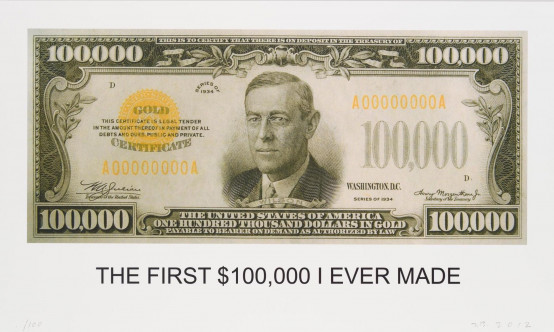12 Reasons Why Art Can Be So Expensive

By Elena Fontaine, France
Art, a realm of expression that transcends boundaries and provokes thought, often comes with a hefty price tag. The elusive pricing of art has been a topic of intrigue and perplexity for many. So, what exactly are the factors that catapult the price of certain artworks into the stratosphere? Let's delve into the hidden world behind art pricing.
1. Historical Significance and Provenance
The background and history of an artwork play a crucial role in its valuation. Provenance, or the history of ownership, often adds a layer of desirability and authenticity. An artwork's connection to significant individuals or events can greatly inflate its value.
2. Artist's Reputation
The reputation of the artist is a significant driver of art prices. Well-regarded and recognized artists often command higher prices due to their established standing in the art community.
3. Rarity and Demand
The basic economic principle of supply and demand applies to art as well. Rare pieces by sought-after artists can create bidding wars among collectors, pushing prices to astonishing levels.
4. Material Costs and Time
The materials used and the time spent creating a piece can also impact its price. High-quality materials and meticulous craftsmanship demand a higher price.
5. Aesthetic Appeal
While subjective, the aesthetic appeal of an artwork can influence its price. Unique, visually stunning pieces are often valued higher.
6. Market Trends
The art market is influenced by trends. Certain styles or artists may become fashionable, leading to a surge in prices.
7. Gallery Representation
Galleries invest time and resources to promote artists and their work. This representation can significantly influence the price of an artwork.
8. Size and Condition
Larger artworks and those in pristine condition often fetch higher prices. The size can impact the perceived value, and the condition ensures the longevity of the piece.
9. Expert Appraisals
Expert appraisals can significantly impact an artwork's price. A high appraisal value can create a higher perceived worth.
10. Emotional Connection
Sometimes, the price of art is driven by a personal or emotional connection a buyer has with a piece, pushing them to pay prices above market value.
11. Investment Potential
Art is often seen as an investment. The potential for an artwork to appreciate in value over time can drive up its initial pricing.
12. Cultural Relevance
Artworks that resonate with cultural or social movements often have a higher value due to their relevance and impact.
The pricing of art is a complex interplay of these and other factors. It's a realm where logic meets emotion, tangible meets intangible, and the mundane meets the extraordinary. The price tag on an artwork is not merely a reflection of its material worth, but a testament to its journey, its impact, and its place in the societal and cultural narrative. Through the lens of valuation, we glimpse the nuanced and multifaceted world of art, a world that continues to captivate, inspire, and at times, mystify.
Art, a realm of expression that transcends boundaries and provokes thought, often comes with a hefty price tag. The elusive pricing of art has been a topic of intrigue and perplexity for many. So, what exactly are the factors that catapult the price of certain artworks into the stratosphere? Let's delve into the hidden world behind art pricing.
1. Historical Significance and Provenance
The background and history of an artwork play a crucial role in its valuation. Provenance, or the history of ownership, often adds a layer of desirability and authenticity. An artwork's connection to significant individuals or events can greatly inflate its value.
2. Artist's Reputation
The reputation of the artist is a significant driver of art prices. Well-regarded and recognized artists often command higher prices due to their established standing in the art community.
The basic economic principle of supply and demand applies to art as well. Rare pieces by sought-after artists can create bidding wars among collectors, pushing prices to astonishing levels.
4. Material Costs and Time
The materials used and the time spent creating a piece can also impact its price. High-quality materials and meticulous craftsmanship demand a higher price.
5. Aesthetic Appeal
While subjective, the aesthetic appeal of an artwork can influence its price. Unique, visually stunning pieces are often valued higher.
6. Market Trends
The art market is influenced by trends. Certain styles or artists may become fashionable, leading to a surge in prices.
Galleries invest time and resources to promote artists and their work. This representation can significantly influence the price of an artwork.
8. Size and Condition
Larger artworks and those in pristine condition often fetch higher prices. The size can impact the perceived value, and the condition ensures the longevity of the piece.
9. Expert Appraisals
Expert appraisals can significantly impact an artwork's price. A high appraisal value can create a higher perceived worth.
Sometimes, the price of art is driven by a personal or emotional connection a buyer has with a piece, pushing them to pay prices above market value.
11. Investment Potential
Art is often seen as an investment. The potential for an artwork to appreciate in value over time can drive up its initial pricing.
12. Cultural Relevance
Artworks that resonate with cultural or social movements often have a higher value due to their relevance and impact.

















